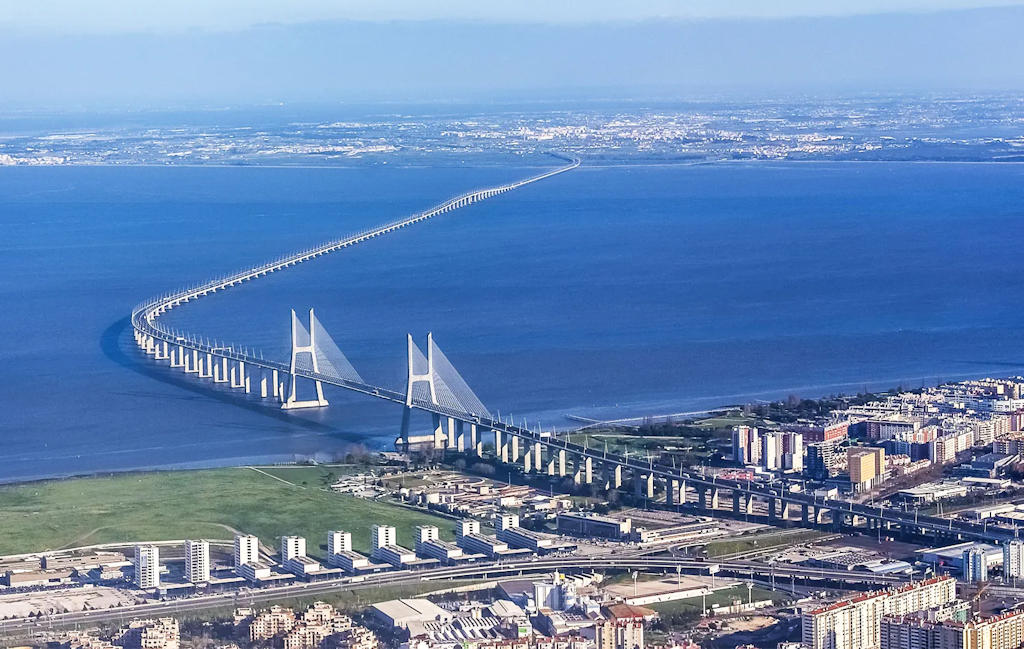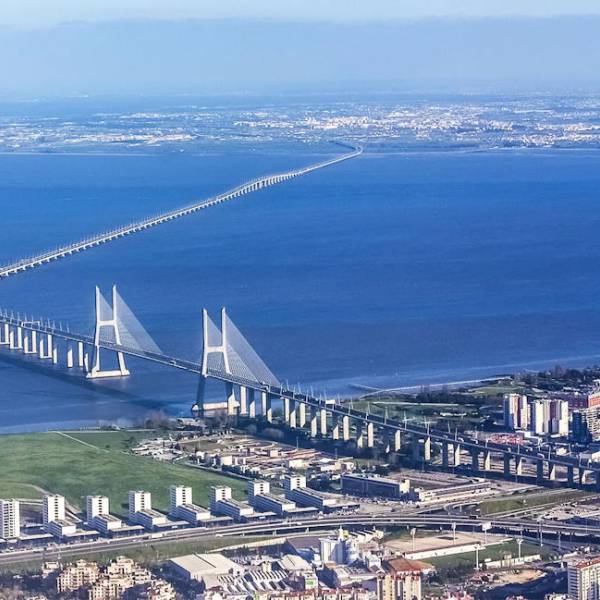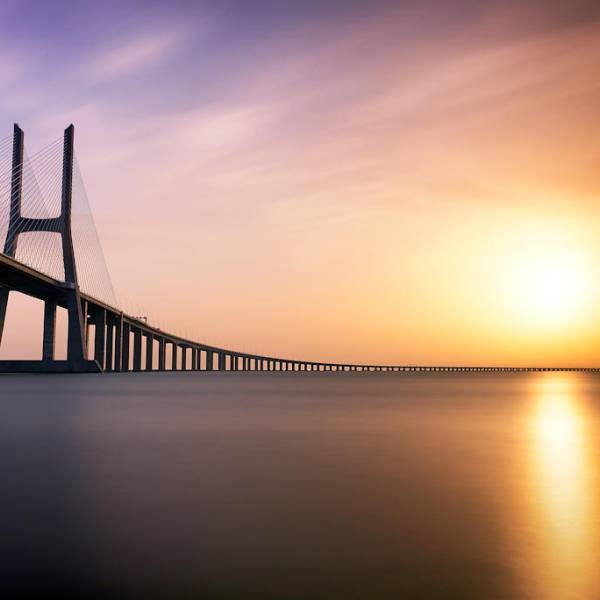The Vasco da Gama Bridge spans a total length of 17.2 kilometers (10.7 miles), making it the longest bridge in Europe at the time of its completion. It consists of multiple sections, including viaducts, cable-stayed spans, and an elevated toll plaza.
The bridge was designed to accommodate both road and rail traffic. It carries the A12 motorway, connecting Lisbon to the southern parts of Portugal, and also serves as a key link in the Portuguese highway network. Additionally, it includes a railway track that allows for train transportation across the Tagus River.
One of the most impressive features of the Vasco da Gama Bridge is its stunning architecture. The bridge's design incorporates sleek lines and a modern aesthetic, creating a visually striking structure that adds to Lisbon's skyline. The main span of the bridge measures 420 meters (1,378 feet), and the towers reach a height of 155 meters (509 feet), making it an impressive sight to behold.
The construction of the bridge posed numerous engineering challenges, including the need to ensure stability in the face of strong winds, seismic activity, and the demanding marine environment. The engineers employed innovative techniques and materials to overcome these challenges and create a safe and reliable structure.
Beyond its functional purpose, the Vasco da Gama Bridge has become an iconic symbol of Lisbon and a popular tourist attraction. Visitors can experience breathtaking views of the city, the Tagus River, and the surrounding landscape from the bridge. Sunset and sunrise views from the bridge are particularly awe-inspiring, offering a unique perspective of the city's beauty.
The bridge has also had a significant impact on the development and connectivity of the surrounding areas. It has facilitated the growth of residential and commercial areas on both sides of the Tagus River, opening up new opportunities for businesses and improving transportation efficiency.
Lisbon.vip Recommends
In terms of infrastructure, the bridge incorporates advanced systems for toll collection and maintenance. These systems ensure the smooth flow of traffic and the ongoing preservation of the bridge's structural integrity.
The Vasco da Gama Bridge stands as a testament to human ingenuity, engineering prowess, and architectural brilliance. It not only serves as a vital transportation link but also represents the progress and modernization of Lisbon and Portugal as a whole.
Visiting the Vasco da Gama Bridge allows individuals to appreciate the fusion of technology, design, and natural beauty. Whether crossing the bridge by car, train, or simply taking in the panoramic views, it is an experience that showcases the harmonious blending of human achievement with the awe-inspiring natural surroundings.
In conclusion, the Vasco da Gama Bridge is an extraordinary feat of engineering, a striking architectural masterpiece, and an integral part of Lisbon's landscape. It serves as a symbol of progress, connectivity, and the enduring legacy of Vasco da Gama's historic achievements.
Map View





